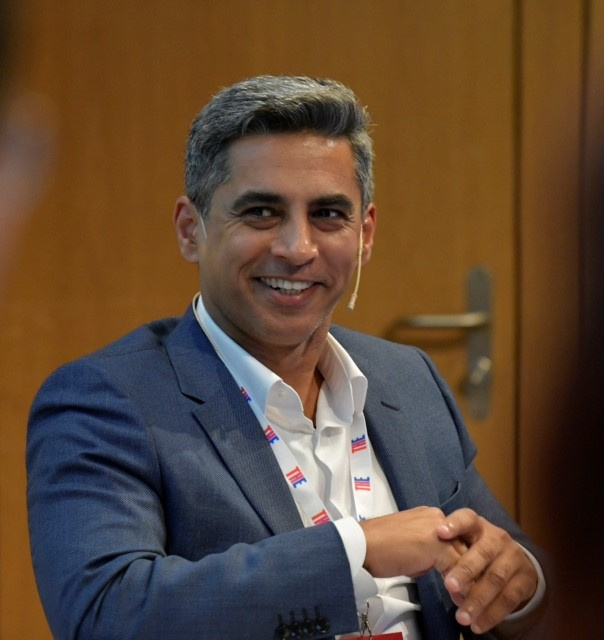
In 1314, the ancient King of Scotland, Robert the Bruce said, “If at first you don’t succeed try, try and try again.” About 500 years later, the Scottish author, Samuel Smiles coined the phrase, “We learn wisdom from failure much more than success.” These insightful Scots are not the only ones with a profound insight into the valuable lessons gleaned from trial and error.
If we take a moment to reflect upon our lives, we too can likely identify a time when we learned more from the experiences that challenged us. If this knowledge is intuitive to the human experience, then it begs the question, “If failure can be such an excellent teacher, then why don’t we intentionally design for it in our classrooms and curricula?” What if we could not only design failure in ways that are productive for learning, but could also demonstrate that it really works?
As a former math teacher, professional soccer player, applied statistician, entrepreneur, and learning scientist, I have both succeeded, and failed, on several fronts. All of which afforded immense learning opportunities and insights, but let’s take math as an example. It’s not that some students just “get it” and others do not, it is how we design the learning experience that makes the difference. So often in education we rely on direct telling rather than engaging students in the process of problem-solving – a process that allows them to generate ideas and solutions even when they might not be the correct ones.
It is this process of generating solutions that is the locus of powerful learning. Providing students with creative opportunities designed to help them reason, discover, and devise potential solutions – all of which are ultimately unsuccessful in revealing the right answer – enables students to actually “see” and for deep learning to take place when a teacher finally explains the correct underlying concepts. This is what I call, “Productive Failure.”
At ETH Zurich – also known as the Swiss Federal Institute of Technology in Zurich, Switzerland – my research team and I took a deep dive into studying the effects of Productive Failure versus traditional instruction. We surveyed 53 research studies reporting 166 experimental comparisons in the past two decades, and using a statistical method of meta-analysis, we were able to quantify and understand the average effect on learning.
Focusing particularly for secondary school and undergraduate university students, we assessed their ability to comprehend and apply concepts in math, physics, chemistry, biology, and medicine. By combining a pragmatic and interdisciplinary approach, we found strong and robust effects in favour of Productive Failure.
Our findings clearly showed that carefully designed problem solving before learning the theory is nearly twice as efficient as receiving a year of instruction from an outstanding teacher. We also learned why that is the case, that there are four mechanisms—Activation, Awareness, Affect, and Assembly—at work that could easily be adapted to benefit your teaching and learning strategies.
For example, imagine trying to teach someone the concept of standard deviation. Instead of first explaining the concept to them and then giving them problems to solve, in productive failure, we design problems for students to solve first even though we know they do not yet know the concepts. These problems are designed based on certain principles that are good for activating students’ prior knowledge. The problems are designed to be engaging and intuitive as well, with the expectation that while students may be able to generate multiple ideas and solutions; these are expected to be sub-optimal or incorrect.
This is precisely what activates the knowledge that is necessary for learning. It also makes students aware of what they know and do not know, hence building a sense of awareness of their knowledge gap. Having invested effort into generating solutions that did not work, these activities then spark an interest in wanting to learn and understand the correct way to solve the problems, which changes their affect, or psychological state, making them more receptive to new concepts. Finally, there is the assembly. This is where the teacher comes in and explains the problems and the solutions to the students; compares the students’ ideas with the correct solutions; and thereby, helps them see what is critical, what works and why, and integrates new knowledge with the activated prior knowledge.
With these mechanisms in hand, I encourage you to try designing for productive failure in your teaching. Let me know how it goes, what you learn, and the improvements you observe in your students learning.
About the author
Manu Kapur holds the Professorship for Learning Sciences and Higher Education at ETH Zurich, Switzerland, and directs The Future Learning Initiative at ETH Zurich that brings together more than 20 professors from 10 departments to advance research on the science of teaching and learning in higher education contexts and translate it into the practice of teaching and learning.
Kapur was previously a Professor of Psychological Studies at the Education University of Hong Kong. He also worked at the National Institute of Education of Singapore as the Head of the Curriculum, Teaching and Learning Department, as well as the Head of the Learning Sciences Lab. Learn more… www.manukapur.com
Register for free
No Credit Card required
- Register for free
- Free TeachingTimes Report every month